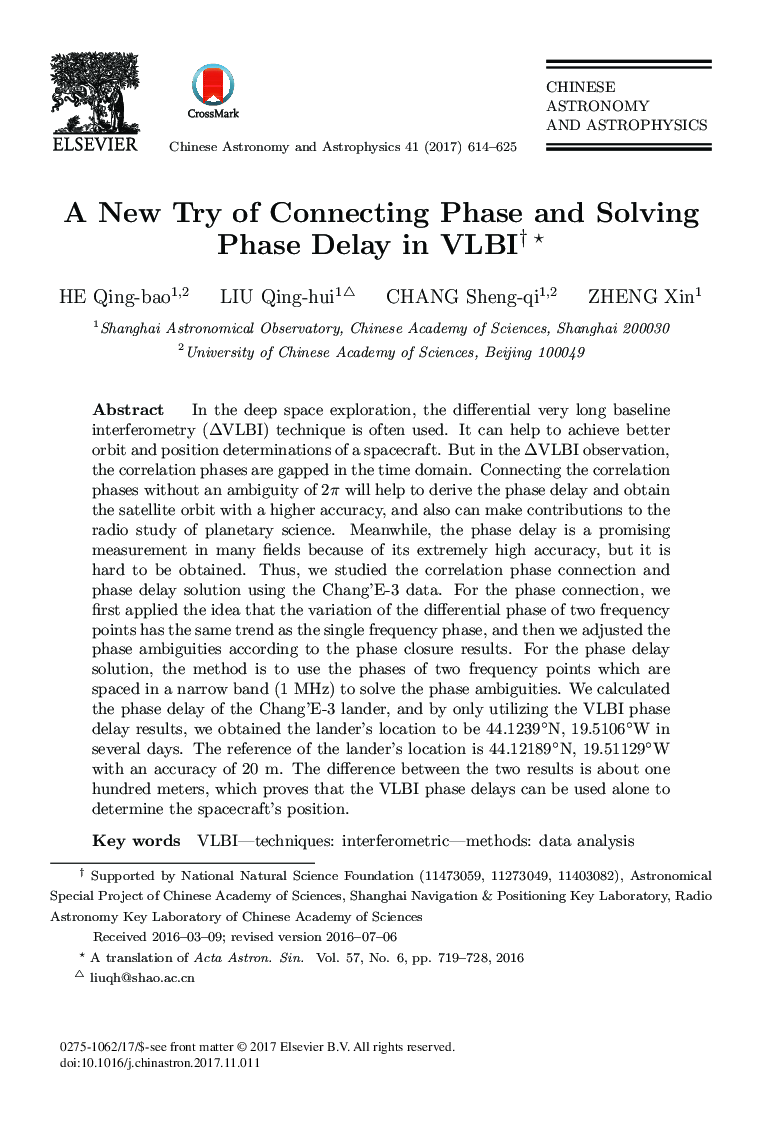| Article ID | Journal | Published Year | Pages | File Type |
|---|---|---|---|---|
| 8133221 | Chinese Astronomy and Astrophysics | 2017 | 12 Pages |
Abstract
In the deep space exploration, the differential very long baseline interferometry (ÎVLBI) technique is often used. It can help to achieve better orbit and position determinations of a spacecraft. But in the ÎVLBI observation, the correlation phases are gapped in the time domain. Connecting the correlation phases without an ambiguity of 2Ï will help to derive the phase delay and obtain the satellite orbit with a higher accuracy, and also can make contributions to the radio study of planetary science. Meanwhile, the phase delay is a promising measurement in many fields because of its extremely high accuracy, but it is hard to be obtained. Thus, we studied the correlation phase connection and phase delay solution using the Chang'E-3 data. For the phase connection, we first applied the idea that the variation of the differential phase of two frequency points has the same trend as the single frequency phase, and then we adjusted the phase ambiguities according to the phase closure results. For the phase delay solution, the method is to use the phases of two frequency points which are spaced in a narrow band (1 MHz) to solve the phase ambiguities. We calculated the phase delay of the Chang'E-3 lander, and by only utilizing the VLBI phase delay results, we obtained the lander's location to be 44.1239°N, 19.5106°W in several days. The reference of the lander's location is 44.12189°N, 19.51129°W with an accuracy of 20 m. The difference between the two results is about one hundred meters, which proves that the VLBI phase delays can be used alone to determine the spacecraft's position.
Related Topics
Physical Sciences and Engineering
Physics and Astronomy
Astronomy and Astrophysics
Authors
He Qing-bao, Liu Qing-hui, Chang Sheng-qi, Zheng Xin,
